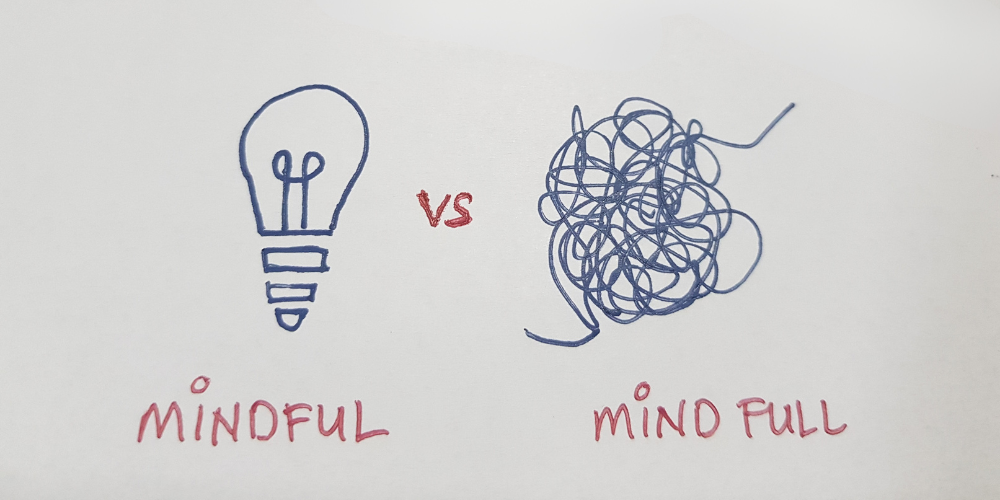Mindful eating isn’t just a trend—it’s a lifestyle. By combining mindfulness with our daily eating habits, we encourage ourselves to slow down and truly savor our food, making every meal a moment of awareness and gratitude.
This approach highlights the body-mind connection, where paying attention to the taste, texture, and aroma of our meals can transform the mundane act of eating into a fulfilling experience. It’s not only about the food on your plate but also how you feel before, during, and after meals.
When you begin this journey, you’re setting out to understand your body’s hunger signals and your emotional triggers related to food. Mindful eating invites you to become attuned to your body’s actual needs, helping to create a harmonious balance between eating and overall well-being.
The benefits extend beyond the table. Through mindful eating, you can improve your mental health, build emotional resilience, and strengthen your relationship with food. It’s about listening to your body, choosing food consciously, and enjoying it without guilt or anxiety.
Imagine meals free of distractions, where every bite is a conscious choice, leading to a more satisfying and guilt-free dining experience. As we delve deeper into this series, we’ll discover the core concepts and practical tools you need to integrate mindful eating into your daily life.
Clearing the Air: Common Misconceptions About Mindful Eating
Mindful eating often gets misunderstood, especially when thrown into the mix of diet fads. It’s not just about eating slowly or savoring every bite for weight loss. There’s way more depth to it.
One big misconception is that mindful eating means strict self-control or deprivation. That’s far from the truth. At its core, it’s about understanding the why and how of eating, not just the what. It’s about listening to your body over following rigid eating schedules or counting calories.
Some folks mix up mindful eating with intuitive eating. While they share similarities, there’s a key difference. Mindful eating focuses more on the sensory experience and being present, while intuitive eating leans towards internal cues like hunger and fullness to guide eating choices. A bit confusing, right? Don’t worry, as you practice, these differences will become clearer.
Many believe it’s only for those looking to shed pounds. Sure, it helps manage weight, but it’s about tuning into the body’s needs, not just fitting into a smaller size. Embracing mindful eating means bringing awareness and intention to how you fuel your body.
The road to mindful eating doesn’t demand a complete lifestyle overhaul. It’s more about small, sustainable changes. So, it’s okay if at first, you feel there are too many rules to remember. Like any skill, mindfulness in eating gets easier with practice. With time, it becomes second nature, making meals more enjoyable and less stressful.
Simple Steps and Tips for Beginners
Starting mindful eating doesn’t have to be complicated. It’s about quieting the noise and tuning into the present.
Begin with just one mindful meal a day. Turn off distractions like the TV or your phone. Focus on all five senses as you eat—notice the aroma, colors, and flavors of your food.
A good tip is to eat slowly. Try using chopsticks if you’re used to forks, or eat with your less dominant hand. This will naturally slow you down and help you savor each bite.
Recognizing hunger cues is key. Ask yourself whether you’re physically hungry or eating out of boredom or stress. This awareness can drastically change your relationship with food.
Remember to chew more and take breaks between bites. This gives your brain time to catch up with your stomach, helping to prevent overeating.
Using guided mindful eating exercises can be a great start. Various online resources offer structured approaches to your meals, as well as guidance for meditation and reflection.
Set an intention before you eat. Even a simple thought like “I’m nourishing my body” can change how you perceive your meal. Intentions can be powerful in creating a habit of mindfulness.
Patience is your friend here. These are small steps, but with consistency, they lead to significant changes. Over time, those tiny moments of mindfulness at the table spill over into other areas of life, nurturing a broader sense of peace and balance.
Mindful Eating Techniques and Practices
Exploring different mindful eating exercises helps bring that focus and peace we often crave. Simple practices like breathing deeply before meals can set a calming tone to your dining experience. It might sound odd, but it creates a pause, allowing you to be fully present when you dig in.
While dining out, mindful eating might seem tricky, but it’s totally doable. Start by skimming the menu to find dishes that genuinely appeal to you. Choose meals that you will savor slowly, appreciating each flavor. Remember, it’s about quality, not quantity, even if you’re at your favorite burger joint.
For those busy bees, implementing mindfulness on the go is a game-changer. Consider packing snacks that are rich in texture and flavor, like nuts or fruit. They’re easy to savor, even in a rush. Through mindful choices, even a quick bite can become a moment of awareness and enjoyment.
Resources like mindful eating podcasts are fantastic for busy schedules, especially as 2025 brings more innovative content in this realm. They offer tips and guidance on how to keep mindfulness in your eating habits, even when life feels like it’s in overdrive.
Mix it up by also incorporating journaling into your practice. After meals, jot down emotions or sensations you experienced. It’s a terrific way to track your growth and see how mindful eating is transforming your relationship with food.
The Science Behind Mindful Eating: Digestion and Weight Loss
Mindful eating isn’t just about enjoying your meals; it taps into some solid science that supports both digestion and weight management. By paying attention to every bite, you give your digestive system the time it needs to process food effectively. This can lead to fewer digestive issues, like bloating and indigestion, because you’re less likely to rush or overeat.
The act of eating mindfully can naturally lead to consuming fewer calories. When you’re aware of each mouthful, you become more attuned to your hunger and fullness signals. This can prevent unnecessary calories from mindless snacking or overeating.
For folks focused on weight loss, mindful eating doesn’t involve restricting foods; it consists of choosing them thoughtfully. It’s about consciously selecting nutrients that satisfy not just the body but also the mind. This approach creates a fulfilling and sustainable weight management plan.
Don’t just take my word for it; real-life success stories abound, with people reporting not just shedding pounds but gaining a healthier, more positive attitude toward food. When combined with regular physical activity, mindful eating becomes a practical component of a balanced lifestyle.
Plus, mindful eating helps reduce stress, an often-overlooked factor in weight gain and digestive problems. Stress can lead to poor eating habits, while a mindful eating practice can help keep stress in check, promoting better digestive health and weight stability.
Daily Mindfulness: Crafting a Consistent Eating Routine
Creating a routine around mindful eating can feel daunting, but consistency is key. Start by incorporating just one mindful eating practice into each meal. It might be as simple as setting your fork down between bites or taking a few deep breaths before digging in.
Another practical approach is to set aside time each week to plan meals. Knowing what’s on the menu reduces mealtime stress and helps you focus on being fully present while eating.
Being consistent doesn’t mean being rigid. There’s flexibility in mindful eating that allows for reflection and adjustment. If a meal doesn’t go as planned, use it as a learning opportunity rather than a reason to abandon your practice.
Include a short gratitude ritual before meals, such as silently acknowledging the journey of your meal from nature to your plate. Such rituals ground you in the present moment and deepen your connection with your food.
Addressing challenges like emotional eating is part of the process. Develop strategies to recognize these cues and respond mindfully. Instead of reaching for food, consider taking a brief walk or doing a deep-breathing exercise to manage stress.
Over time, these small, consistent actions build a routine that becomes second nature. You might notice a shift, not just in your eating habits, but in how you respond to various situations, leading to a more mindful and balanced life overall.
Mindful Eating for Families and Community
Introducing mindful eating at home can be a rewarding experience for everyone, especially if you have kids. It’s an opportunity to instill healthy habits from the get-go, turning meals into family bonding times.
Consider setting up “mindful meals” for the whole family to participate. This might mean turning off electronic distractions and encouraging everyone to share what they enjoy about their food.
Engaging children can be as simple as involving them in meal preparation, letting them pick vegetables at the store, or helping to set the table. Discussing where food comes from can spark curiosity and foster a deeper appreciation for meals.
For teenagers who might be more resistant, start by sharing the benefits of mindful eating, focusing on how it improves energy levels and mood. Presenting it as an enhancement to their active lifestyle can boost interest.
Creating a community around mindful eating can be fun and social. Hosting potlucks where each person shares a mindful eating tip or experience can foster shared learning and support.
Family-friendly menus that highlight colorful and varied ingredients encourage everyone to get on board. Remember, variety isn’t just the spice of life; it’s the heart of a balanced diet.
Mindful eating also opens the door for broader conversations about sustainability, nutrition, and health. Integrating these themes at home enriches understanding and makes cognizant eating a holistic approach rather than a solitary activity.
Conclusion: Embracing Mindful Eating for a Better Tomorrow
Getting into mindful eating isn’t just a temporary change—it’s an ongoing journey that reshapes your relationship with food and well-being. As you’ve explored the various aspects of mindful eating —busting myths, learning practical techniques, and fostering a mindful home environment —it’s clear that these practices offer profound, lasting benefits.
The beauty of mindful eating lies in its simplicity and adaptability. It doesn’t demand major life changes overnight but encourages small, meaningful shifts that collectively lead to a more balanced and healthier lifestyle.
By prioritizing awareness, you’re more likely to find joy in your meals, make health-conscious decisions without stress, and build a sustainable habit that complements your unique lifestyle and goals. It creates a space to reflect not just on what you eat, but also on how and why, turning each meal into an act of empowerment and respect for your body.
As mindful eating continues to gain traction, keep an eye out for new trends and resources. Podcasts, community events, and workshops continue to evolve, offering fresh perspectives and support for your mindful eating practice. By engaging with these resources, you’re part of a growing community committed to a conscious, healthier future.
Remember, mindful eating is more than a practice—it’s a celebration of nourishing and being present in each flavorful moment.

